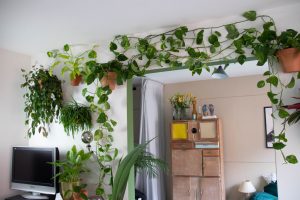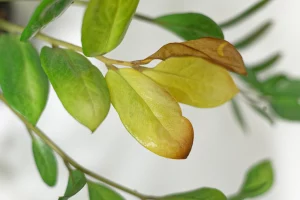Are you tired of the gloomy corners in your home that seem impossible to brighten up? Well, fear not! In this article, we are going to dive into the world of indoor low-light plants that can bring life and vibrancy to even the darkest spaces. Whether you have a basement apartment or a room with limited natural light, these green beauties will not only survive but thrive in such conditions. So, get ready to discover a whole new world of plant options that will transform your home into an oasis of lush greenery.
Importance Of Choosing Low-Light Plants
Low-light plants are becoming increasingly popular among indoor gardeners, and for good reason. Not all of us have access to ample sunlight in our living spaces, and low-light plants offer a solution by thriving in these conditions. But besides being a practical choice, there are several other compelling reasons why you should consider filling your home with low-light plants.
- Firstly, low-light plants can create a calming ambiance in any room. Their deep green leaves add a touch of tranquility, making them perfect for bedrooms or meditation spaces. Additionally, studies have shown that being surrounded by plants can reduce stress and anxiety levels. So not only do low light plants enhance your décor, but they also contribute to your overall well-being.
- Additionally, choosing low light plants allows you to explore a variety of unique and interesting species. Many tropical and exotic plant varieties actually prefer shady conditions rather than direct sunlight. By opting for these lesser-known species, you can cultivate an eclectic collection of flora that will undoubtedly spark conversation with guests who enter your home. Embracing the diversity of nature’s offerings is part of the appeal of gardening indoors– so don’t limit yourself to just the sun-loving varieties!
Top Low Light Plants For Indoors
1. Spider Plant (Chlorophytum Comosum):
In the world of low-light plants, the spider plant is a true champion. Not only does it thrive in dimly lit spaces, but it also cleans the air by absorbing toxins like formaldehyde and carbon monoxide. With its long, arching leaves adorned with white stripes, this resilient plant adds a touch of elegance to any interior. Plus, spider plants are incredibly easy to care for – they tolerate irregular watering and can even bounce back from neglect.
2. ZZ Plant (Zamioculcas zamiifolia):
If you’re looking for a low-maintenance indoor plant that will flourish in low-light conditions, then the ZZ plant is your answer. With its glossy green foliage and unique leaflet structure, this tropical beauty brings an exotic vibe to any space. The best part? It can survive in almost any lighting condition – from fluorescent office lights to a dimly lit corner of your living room. No wonder it’s often hailed as the unkillable houseplant!
3. Calathea (Calathea spp.):
Known for their stunning foliage patterns and vibrant colors, Calatheas are an excellent choice for adding some visual interest to low-light areas indoors. While they generally prefer bright indirect light, many varieties such as Calathea lancifolia or Calathea rufibarba—also called Prayer Plants—can thrive in lower light conditions too.
4. Pothos (Epipremnum aureum)
Pothos is a versatile plant that can tolerate not only low light conditions but also inconsistent watering schedules—a combination that makes it perfect for beginners or those with busy lifestyles. Its heart-shaped, cascading leaves come in various shades of green and yellow, adding visual interest to any space. Pothos is not just visually appealing; it’s also known for its air-purifying qualities as it absorbs pollutants and releases oxygen into the atmosphere.
Overall, selecting the right plant for your indoor space involves considering various factors such as lighting conditions and maintenance requirements. The mentioned low light plants offer both beauty and resilience indoors while providing added benefits like air purification—all without compromising on style and aesthetics. So if you’re looking to bring some life into your dimly lit rooms or office spaces, don’t hesitate to give these top 5 low-light plants a try!
Care Tips For Low-Light Plants
Low-light plants are a popular choice for indoor gardening enthusiasts, as they thrive in areas of your home where natural sunlight is limited. However, caring for these plants requires some special attention to ensure their well-being.
- One essential tip is to avoid overwatering low-light plants, as they cannot efficiently utilize excess water due to the lack of sunlight. It’s best to allow the top layer of soil to dry out between waterings and only provide moisture when necessary.
- In addition, proper placement plays a crucial role in the success of low-light plants. While they can survive in dimly lit corners, it’s important to note that not all low-light areas are created equal. If possible, choose locations closer to windows or other sources of indirect light for your green companions. This will give them a slight boost so they can continue performing essential functions like photosynthesis.
- Another care tip for low-light plants is regular dusting and cleaning of their leaves. Dust accumulation on plant leaves can hinder their ability to absorb what little sunlight is available, which may lead to stunted growth or discoloration. So take a few minutes each week with a damp cloth or gentle spray bottle filled with water and wipe down those leaves! Your plants will thank you for it by showing off healthier foliage and vibrant colors.
Overall, taking care of low-light-loving indoor plants involves mastering watering techniques, thoughtful placement choices, and regular leaf maintenance routines.. The reward? Enjoyment of lush greenery even in spaces where traditional houseplants
Conclusion:
In conclusion, incorporating low-light plants into your indoor space can transform it into a lush and inviting haven. These resilient plants thrive in environments with minimal natural sunlight, making them perfect for rooms that lack windows or those with heavy curtains. Not only do they add an aesthetic element to any room, but they also purify the air by removing harmful toxins and releasing oxygen. With advancements in plant lighting technology, such as LED grow lights, even spaces without any natural light can now be adorned with vibrant greenery.
One of the key benefits of low-light plants is their ability to create a calming and relaxing atmosphere within your home. As humans, we are instinctively drawn to nature’s soothing qualities. Incorporating indoor plants not only brings us closer to the outdoors but also helps reduce stress levels and improve overall well-being. Low-light plants like snake plants (Sansevieria) or peace lilies (Spathiphyllum) are particularly effective in creating this serene environment due to their ability to survive in dimly lit spaces while still thriving beautifully.
Furthermore, enhancing your indoor space with low-light plants presents an opportunity for creativity and personal expression through various decorative arrangements. You can experiment with different plant species that have unique colors, shapes, and textures to complement your existing interior design scheme or create striking contrasts against a neutral backdrop. Whether you choose trailing ivy cascading from a hanging planter or sleek succulents grouped together on shelves, there are endless possibilities for creating eye-catching displays that will breathe life into






Be First to Comment